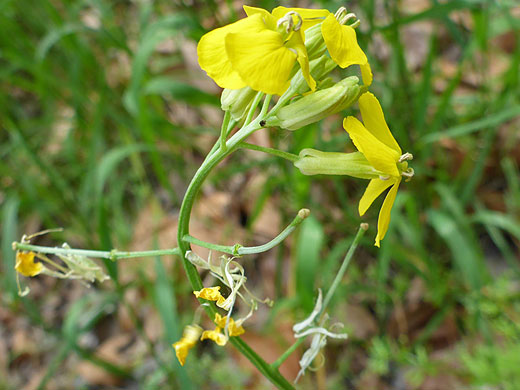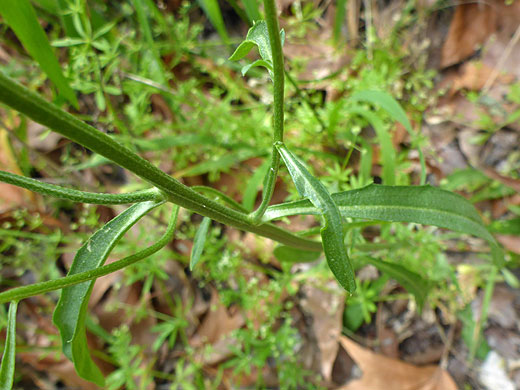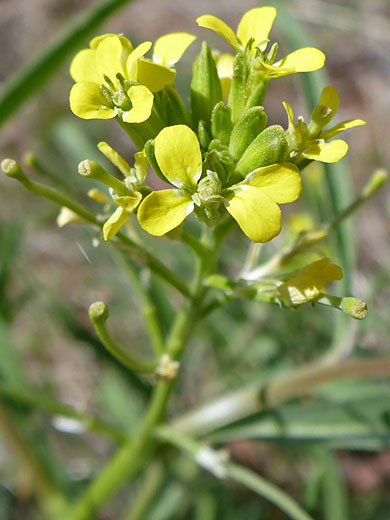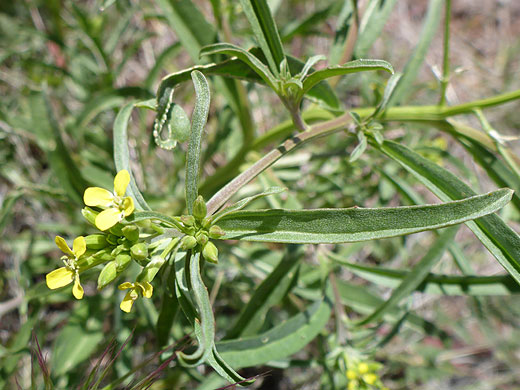Common names:
Spreading wallflower, treacle mustard, bushy wallflower
Family:
Scientific name:
Erysimum repandum
Main flower color:
Range:
Most areas of the US (non native)
Height:
Usually up to 18 inches; sometimes more
Habitat:
Fields, roadsides, streambanks, disturbed areas; sea level to 7,000 feet
Leaves:
Basal and cauline (alternate); up to 3 inches long and 0.5 inches wide, with a few edge teeth
Season:
April to June
Erysimum repandum is native to Europe and Asia, but has spread across most parts of the US apart from the upper Great Plains and Florida; in the West it is most common in Arizona and the Great Basin. The stout stems are angular in cross-section rather than round, and they grow vertically upwards, singly or branching from the base. Leaves are produced at the base and along the stem, though the former often wither by flowering. Upper stem leaves are sessile, while those lower down have short stalks. Leaf margins are usually lined by small, well-separated teeth. Leaves are always narrow but the shape is variable; linear, oblanceolate or oblong. Stems and leaf surfaces have a covering of short, branched hairs (trichomes).
The inflorescence is an elongated cluster, typical of the brassicaceae family. Flowers have four green sepals, approximately linear in shape, and four yellow petals, broadest near the tip. Petals are clawed; narrowing markedly at the base. The base of the petal may have a white patch. Four brown anthers are arranged around a green style. The fruit is a narrow green pod up to 3 inches long, spreading or ascending.
The inflorescence is an elongated cluster, typical of the brassicaceae family. Flowers have four green sepals, approximately linear in shape, and four yellow petals, broadest near the tip. Petals are clawed; narrowing markedly at the base. The base of the petal may have a white patch. Four brown anthers are arranged around a green style. The fruit is a narrow green pod up to 3 inches long, spreading or ascending.
All Contents © Copyright The American Southwest | Comments and Questions | Contribute | Site Map





